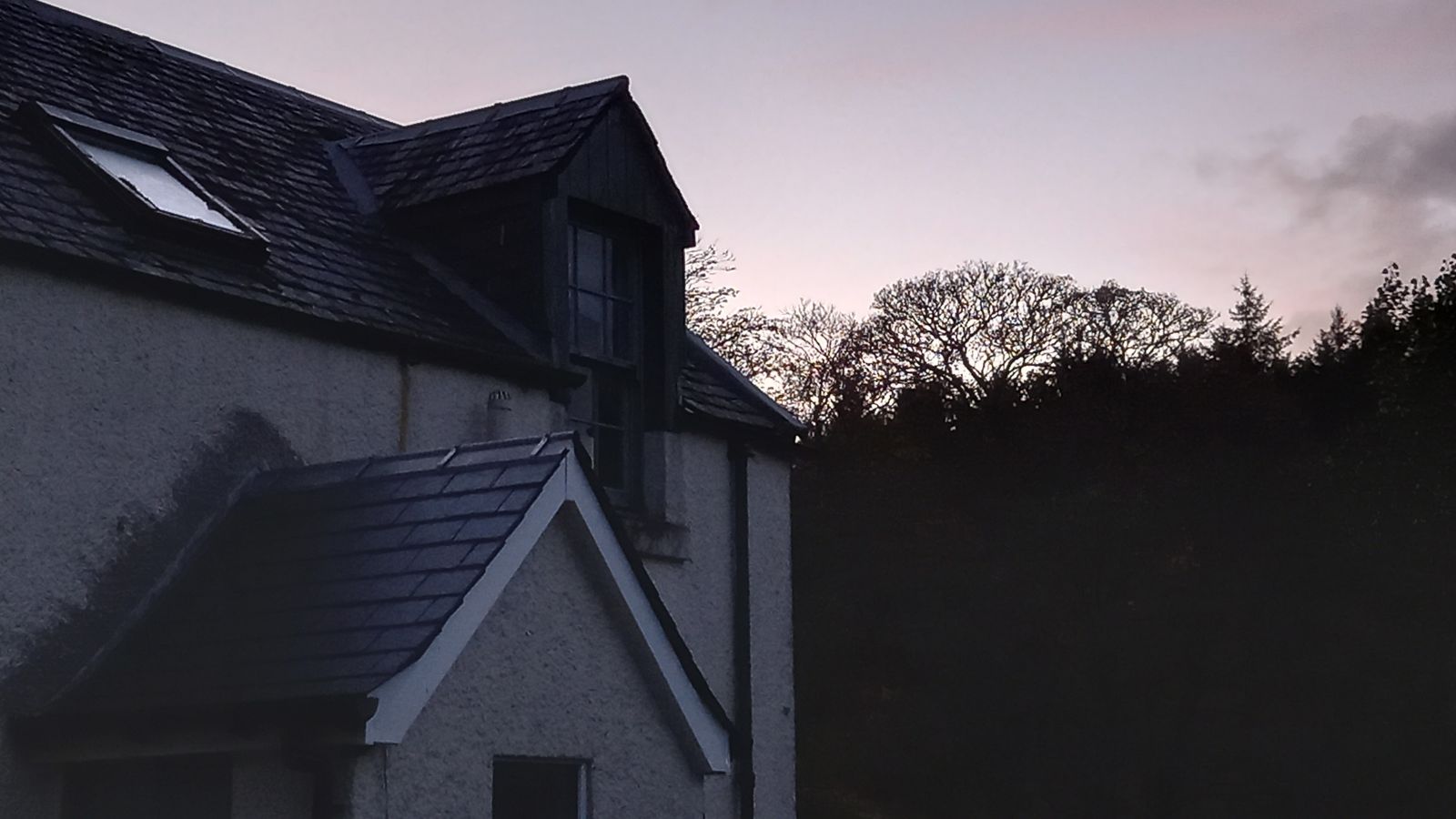We’ve been doing dusk and dawn bat surveys up at Glenaros as we try and track down where our bats are living and what species of bat have decided to set up home in our backyard. Our Head of Ecology Lindsay and a team of plucky volunteers have been out dusk til dawn monitoring the trees and buildings on the Glenaros Estate. Here’s a look at our discoveries so far…
Q. What have you been doing to survey the bats at Glenaros?
This summer, we had our bat ranger, Chloe, start the bat surveys of all our buildings at Glenaros, along with myself, our property manager, Matt, and other keen volunteers. This work involved me checking all the buildings for signs of bats during the day, followed up by dusk and dawn surveys across several weeks. Chloe, in particular, liked dawn bat surveys as it was a quiet time when all sorts of wildlife was wandering around the property, including our resident red deer. Being a night owl myself, I much prefer the dusk bat surveys but there’s no questioning the privileged feel you get from being around at the break of dawn when no-one else is about, and when the sun comes up….wow!

Q. What have you spotted so far? Anything interesting discoveries to report?
We found that Glenaros supported at least three species of bat, including Soprano pipistrelle, Common pipistrelle (although I prefer its other name, Bandit pipistrelle, as it has much more character to it) and the odd Brown long-eared bat. Brown long-eared bats are my favourite as they have enormous ears, like Dumbo the flying elephant, and can pick insects off leaves and spiders from webs. Another species briefly picked up by Chloe’s bat detector was the Daubenton’s bat, or Water bat, which must have come up from the Aros River nearby, where they often like to forage for insects.

In the end, we found at least 10 bat roosts across five buildings and within nearby mature trees. Most of these roosts were very small, having either one or two bats only in them. However, three roosts had several bats within them. None of these roosts were maternity roosts but taken together, we had around 20+ bats in our buildings and trees, mainly Soprano and Common pipistrelles. It is clear that Glenaros buildings are home to a nice little local population of bats, and when you consider that bats can eat a lot of midgies in a night, they really are angels on our shoulders.

Q. Any weird or wonderful discoveries?
I think the most wonderful discovery for me is that everyone really enjoys standing outside staring up at buildings looking for bats at dusk. Some might call that weird too! However, don’t knock it until you try it! We rush around all day doing things and there is something very meditational about being out at dusk or dawn doing bat surveys in the peace and quiet. You often have the flying antics of bats around you as they sometimes chase each other between feeding, and when combined with the soundtrack from a bat detector, a whole new world starts to open up in front of you. Add to the fact that the midgies were kinder than normal at Glenaros this year, it’s not a bad way to spend an evening.
Help us to conserve and restore biodiversity today. With our range of subscription biodiversity plans and one-off gifts, you can contribute towards conserving and restoring biodiversity on our UK sites and have a positive impact on reversing the nature crisis.




